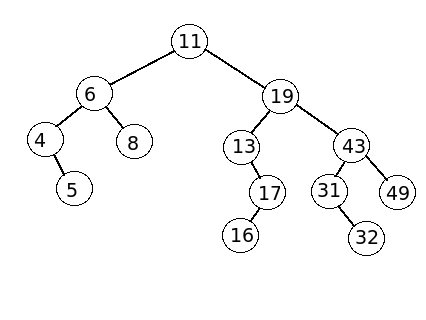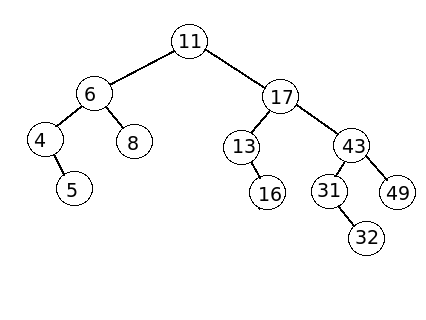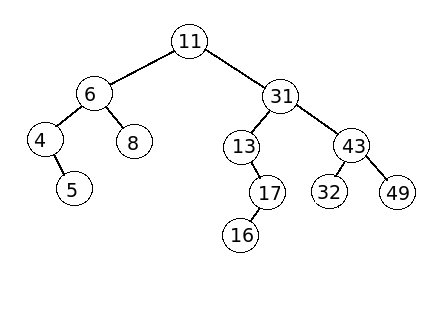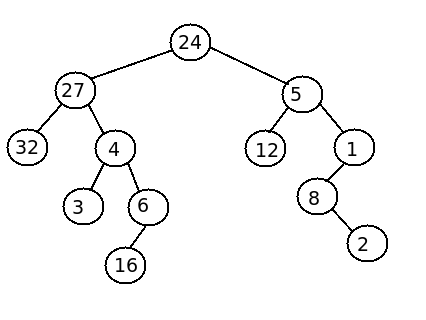11, 6, 8, 19, 4, 13, 5, 17, 43, 49, 16, 31, 32
- Draw a binary search tree by inserting the above numbers from left to right

- What is the height of the above tree?
4 - Show the two trees that can be resulted after the removal of 19.


- each node stores a single number and
- a preorder traversal of T yields
24,27,32,4,3,6,16,5,12,1,8,2and - an inorder traversal of T yields
32,27,3,4,16,6,24,12,5,8,2,1.

a) O(log n)
b) O(n)
c) O(n * log n)
d) O(n2)
a) Preorder
b) Inorder
c) Postorder
d) depends on how the elements are inserted
a) O(log n)
b) O(n)
c) O(n * log n)
d) O(n2)
a) O(log n)
b) O(n)
c) O(n * log n)
d) O(n2)
a) O(1)
b) O(log n)
c) O(n)
d) O(n * log n)
a) be the root.
b) be a leaf.
c) have at least one child.
d) have at most one child.
Insert the data into the BST then pull it out using an In-Order traversal. The worst-case complexity of the insertions is O(n2). The In-Order traversal is O(n), so the worst-case complexity is O(n2).